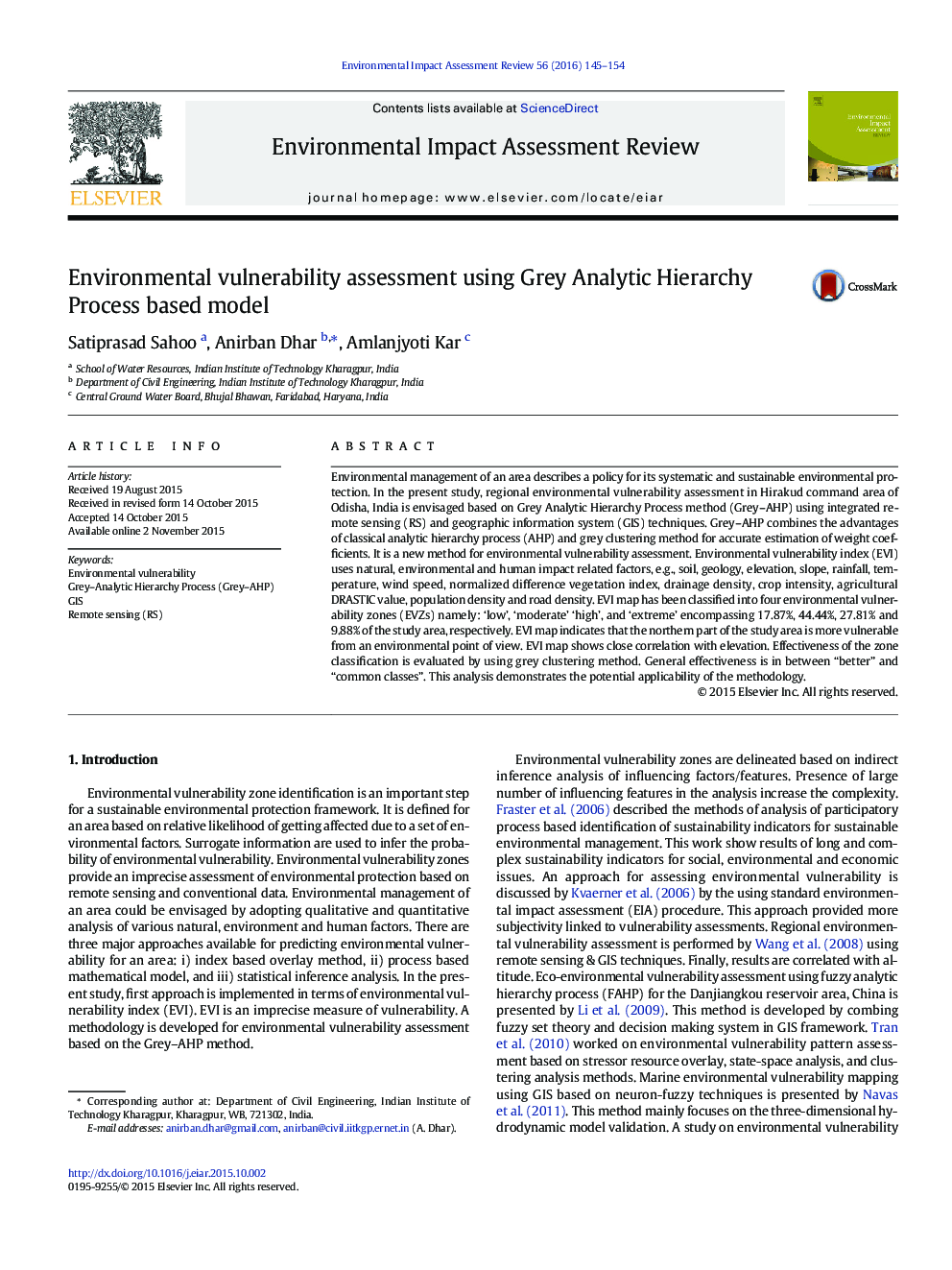| Article ID | Journal | Published Year | Pages | File Type |
|---|---|---|---|---|
| 1052683 | Environmental Impact Assessment Review | 2016 | 10 Pages |
•Environmental vulnerability zone identification based on Grey Analytic Hierarchy Process (AHP)•The effectiveness evaluation by means of a grey clustering method with support from AHP•Use of grey approach eliminates the excessive dependency on the experience of experts.
Environmental management of an area describes a policy for its systematic and sustainable environmental protection. In the present study, regional environmental vulnerability assessment in Hirakud command area of Odisha, India is envisaged based on Grey Analytic Hierarchy Process method (Grey–AHP) using integrated remote sensing (RS) and geographic information system (GIS) techniques. Grey–AHP combines the advantages of classical analytic hierarchy process (AHP) and grey clustering method for accurate estimation of weight coefficients. It is a new method for environmental vulnerability assessment. Environmental vulnerability index (EVI) uses natural, environmental and human impact related factors, e.g., soil, geology, elevation, slope, rainfall, temperature, wind speed, normalized difference vegetation index, drainage density, crop intensity, agricultural DRASTIC value, population density and road density. EVI map has been classified into four environmental vulnerability zones (EVZs) namely: ‘low’, ‘moderate’ ‘high’, and ‘extreme’ encompassing 17.87%, 44.44%, 27.81% and 9.88% of the study area, respectively. EVI map indicates that the northern part of the study area is more vulnerable from an environmental point of view. EVI map shows close correlation with elevation. Effectiveness of the zone classification is evaluated by using grey clustering method. General effectiveness is in between “better” and “common classes”. This analysis demonstrates the potential applicability of the methodology.
